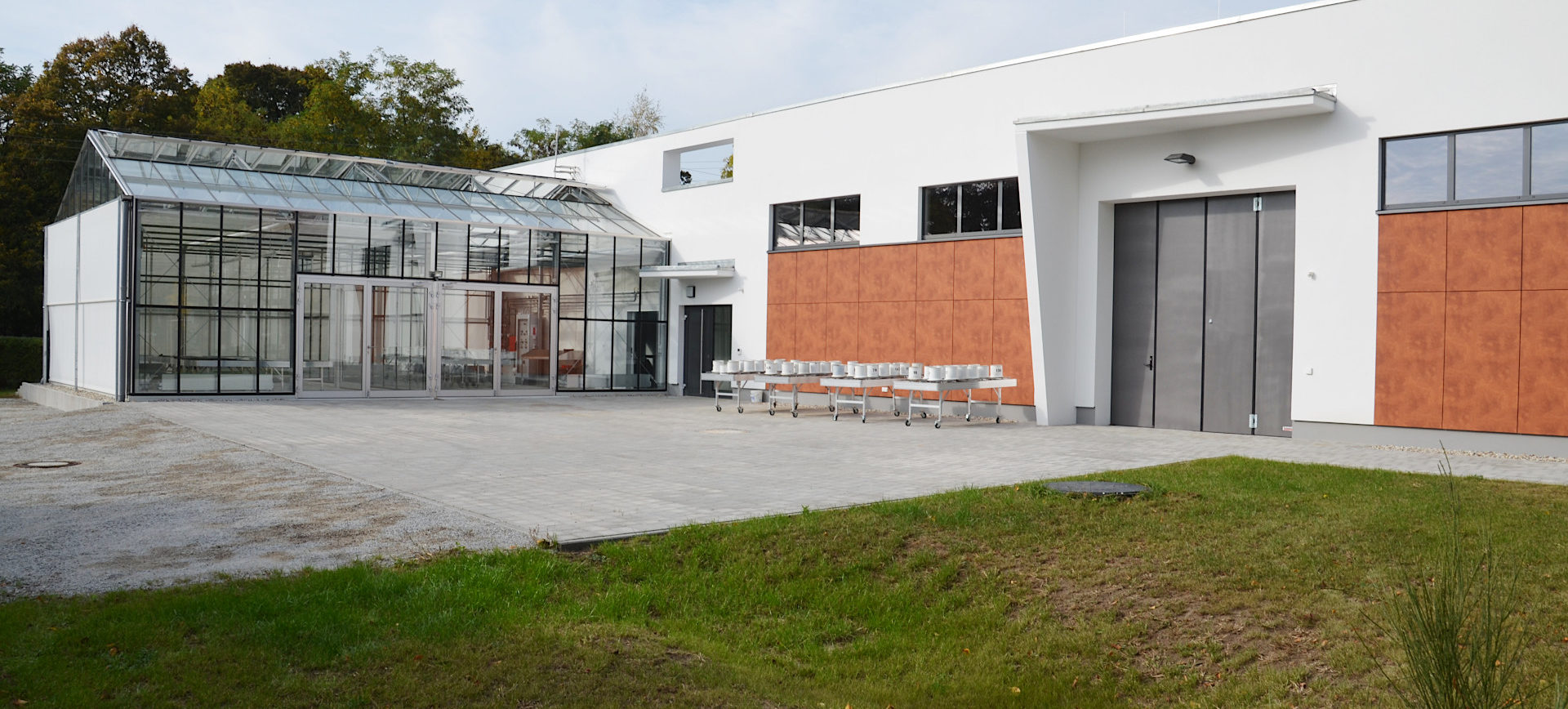
Facilities
New office and laboratory building
With the new building completed in 2020, the FIB e.V. has a modern and attractively designed office and laboratory building.
- On the ground floor there is a large consultation room, which is also suitable for events. It also houses the staff lounge, some offices, garages for the service vehicles and two guest rooms.
- On the first floor a modern laboratory landscape has been created, which follows the workflow from the delivery of the samples to the finished analysis.
- The offices of the board of directors and the scientists are located on the top floor.
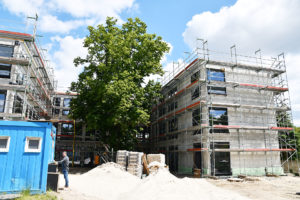
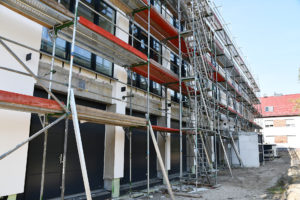
The new building was designed and built under the direction of the architectural office Habermann (Finsterwalde). The lime tree standing in front of the old building was retained and the new building was built around it in a U-shape. Heating is mainly provided by geothermal energy.

The investment project was financed by the ERDF and the budget of the Land Brandenburg.
Analysis of soil, plants, water and sludge
The FIB laboratory carries out physical, physical-chemical and chemical tests. It complies with DIN and DIN-EN(ISO) standards and, when testing soils, with HBU (Handbook of Soil Testing), VDLUFA (Association of German Agricultural Research Institutes) and HFA (Handbook of Forest Analysis). In addition, the FIB-Laboratory is approved as an examination centre for certain wastewater examinations and sampling in the state of Brandenburg (specialised module water, small sewage treatment plants).
Selection from the range of services:
- various acid digestions (hydrochloric acid, aqua regia, HF, H2SO4) and extracts according to VDLUFA (Nmin, DL, CAL, ALE)
- Determination of the potential (according to DIN 19684-8) and effective (according to HFA A 3.2.1.1 (soil) or HFA A 3.2.1.9 (humus) Cation exchange capacity
- Determination of soil physical parameters according to DIN ISO 11274 and DIN ISO 11272
Determination of the grain size composition according to DIN 19683-2 - Examination of plants, e.g. HNO3 pressure digestion according to EPA Method 3052
Technical equipment:
- Element determination using ICP-OES, flame AAS (incl. hydride technique) and graphite furnace AAS
- Elemental analyser (C, N, S)
Microwave oven for various digestions - UV Vis photometer
- TOC/TNb analyser
- Ion chromatograph
- open digestion systems
- Systems for determining the water retention curve (sand baths, pressure pots)
- Steam distillation (ammonium-N, Kjeldahl-N)
Contact:
For sustainable landscape research … Versatile in use
With this combined water pilot plant and greenhouse the FIB e.V. positions itself for future research topics. Several functionalities are available for this purpose:
- The large pilot plant hall, where column and other experiments can be carried out. Gas and water connections in the hall are available for this purpose, as is a crane runway for transporting heavy loads. This allows tests to be carried out on the discharge of test materials with water as well as on the flow through certain materials. The weathering of iron sulphides in the mining dumps is only one possible field of research. Thus, remediation methods can also be tested on a small technical scale.
- The greenhouse enables experiments on specific crops in two climatically separately controllable chambers – both for agriculture and forestry as well as for renaturation. Experiments are conducted on the yield formation of agricultural crops, their efficient fertilisation and resistance to pests. Among other things, “novel” soil conditioners made from organic residues such as “biochar” (terra preta substrate) are tested for their effects on crop production.
- The technical centre also has two climate chambers. Here, temperature, air humidity and radiation can be simulated by computer. For example, the effects of extreme weather conditions on plant growth, such as heat, drought or frost, can be tested. Such stress-physiological tests are important for assessing resistance and thus suitability for cultivation.
The technical centre was designed and built by the architectural office Habermann (Finsterwalde) as a modern functional building. The building is heated by geothermal energy.
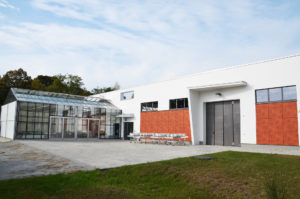
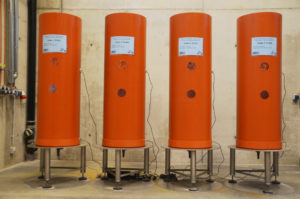

The investment project was financed by the ERDF and the budget of the Land Brandenburg.
Contact Water Technology Centre:
Contact Greenhouse:
Detailed investigation of water and material flows
The “Versuchsstation Grünewalde” (experimental station Grünewalde, City of Lauchhammer) has been operating since 1955 on recultivation areas of the former open-cast lignite mine “Koyne” in the Lusatian lignite mining district. With its almost 100 non-weightable HDPE large lysimeters (soil columns), the plant is one of the largest of its kind in Germany. Since April 2011, 4 weightable large lysimeters of the most modern design complete the equipment. With these, all water balance variables can now be measured in high temporal and spatial resolution, which enables, for example, the calibration and validation of water balance models or pedo transfer functions. A further research focus was on questions of substance release or displacement in tipping substrates with high sulphur content and typical arable soils of the region. In addition, there are topics of groundwater recharge and water use efficiency of agricultural energy crops, such as sorghum millet or maize.
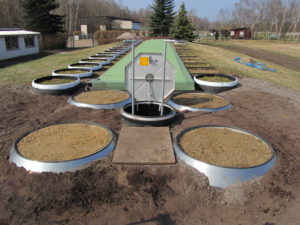
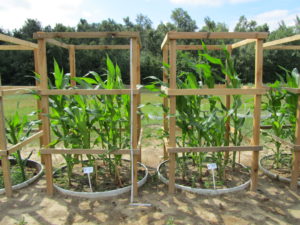
Chronology1928:
- Utilisation by the opencast lignite mine Koyne
- 1955: Research Station Grünewalde of the Humboldt University of Berlin (HUB)
- 1958: Cover and ash emulsification
- 1961: First lysimeter experiments to determine the substance loads of tipping substrates
- 1992: Transfer to the Research Institute for Post-Mining Landscapes
- 1995: Extension of the plant to 94 non-weighable large lysimeters
- 2011: Installation of 4 weighable stainless steel large lysimeters
Contact:
Field trials
The FIB operates agricultural and forestry experimental plots in the Welzow open-cast mine, on a grown field site near Finsterwalde and on the Grünewalde experimental station site in the immediate vicinity of the lysimeter plant. The field trials include testing options for the cultivation of lavender in Lusatia, variety trials with sorghum millet and the development of management strategies for the Black locust.

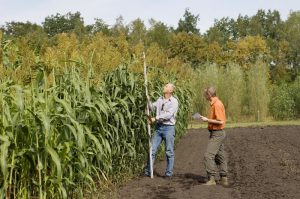

Contact Agriculture:
Contact Forestry:
